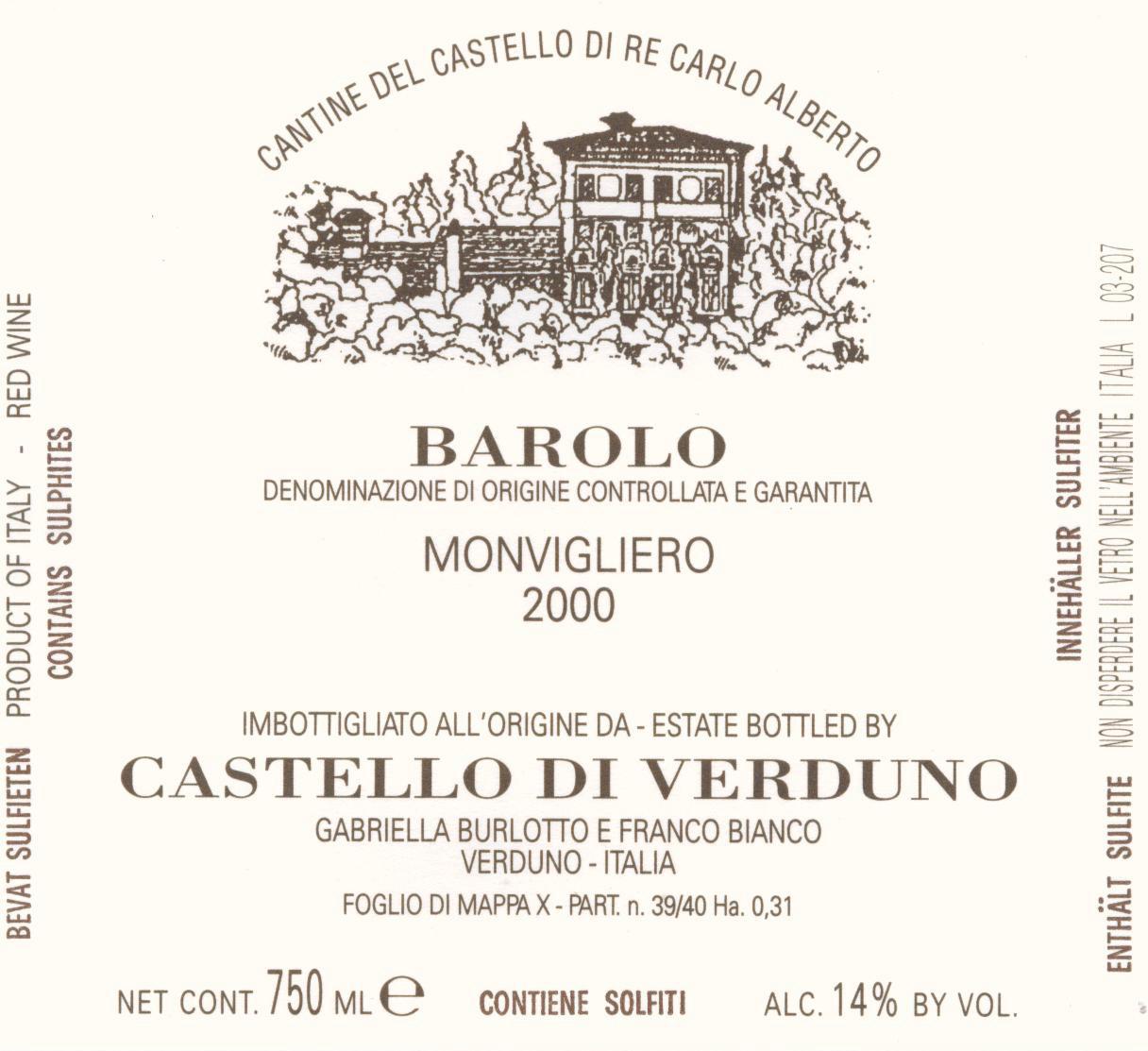2000 Barolo Red Blend
The Castello Di Verduno Monvigliero is a captivating red blend from the illustrious Barolo region, renowned for its exceptional winemaking heritage. This vintage from 2000 reveals a deep ruby color, hinting at the complexity within. With a full-bodied structure, this wine presents a sumptuous mouthfeel that envelops the palate in rich, velvety textures. Acidity is bright and lively, enhancing the wine's freshness while maintaining harmony with its robust profile. The tannins are notable yet finely integrated, ensuring a graceful balance that invites further exploration. Expect prominent fruit intensity, showcasing dark cherry, plum, and subtle hints of spice that emerge with each sip. This delightful wine is remarkably dry, presenting a well-rounded experience that lingers gracefully on the finish, leaving a lasting impression of its storied origins.
The Castello Di Verduno Monvigliero is a captivating red blend from the illustrious Barolo region, renowned for its exceptional winemaking heritage. This vintage from 2000 reveals a deep ruby color, hinting at the complexity within. With a full-bodied structure, this wine presents a sumptuous mouthfeel that envelops the palate in rich, velvety textures. Acidity is bright and lively, enhancing the wine's freshness while maintaining harmony with its robust profile. The tannins are notable yet finely integrated, ensuring a graceful balance that invites further exploration. Expect prominent fruit intensity, showcasing dark cherry, plum, and subtle hints of spice that emerge with each sip. This delightful wine is remarkably dry, presenting a well-rounded experience that lingers gracefully on the finish, leaving a lasting impression of its storied origins.




